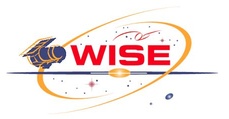
WSDC D-T010

 |
Impact of Pattern Noise on Processed WISE Data Products WSDC D-T010 |
 |
The WISE Science Data Center has been asked to assess the impact of fixed-pattern noise that was observed in W3 and W4 dark images acquired during testing of the WISE payload. We have processed two sets of simulated WISE data covering the same region of sky, one that contains the pattern noise and one that does not, to measure the relative impact of pattern noise on coadded (Atlas) image noise, photometric accuracy, astrometric accuracy source detection completeness and reliability, and moving object detection completeness and reliability.
The noise pattern observed in the WISE payload test images is roughly sinusoidal, running on diagonals that differ in orentation between array quadrants, and sometimes within quadrants. The phase and direction of the corrugated patterns vary from frame-to-frame, and the amplitude is also seen to vary slightly between frames. The typical pattern amplitude is ~50 DN and 26 DN in W3 and W4 respectively. The typical wavelength (peak-to-peak) is approximately 40" (where the scale is 2.75"/pix in W3 and 5.5"/pix in W4).
To gauge the effect of the pattern noise on information extracted from WISE data, two sets of simulated images were generated by Ned Wright. The two image sets covered identical regions on the sky, centered approximately at RA,Dec=(180o,0o). Each set contained 431 framesets, simulating segments of 34 adjacent orbits approximately 6 degrees in length. The simulations provide enough data to represent what will be the full nominal survey coverage of an area covered by four Atlas Images. One set of the simulated images were produced by using individual dark frames for W3 and W4 taken from MIC-2 payload testing at SDL. These dark frames contain the pattern noise signal. The second set of images were constructed using the dark images for all frames in each of W3 and W4 that are the combination of a large number of individual darks. Because of the variable phase of the pattern signal, the resulting pattern is averaged down in these combined darks.
Both simulated data sets used the same combined dark images for W1 and W2. We note that subsequent examination of W1 and W2 dark images have shown that there is also some pattern noise present in those bands. However, they have not been included in these simulations.
Both simulations were processed using version 2.3 of the WISE Science Data System (WSDS). Processing steps included: 1) scan/frame processing that applies instrumental calibration corrections to the "raw" frames, detects and extracts sources and derives astrometric solutions; 2) moving object detection that links detections on frames from separate orbits into moving object "tracklets"; and 3) multiframe processing that combines images frames covering the same region on the sky, and detects and extracts sources from the full set of image data. The analyses below compare the characteristics of the processed data image and extracted source list products with and without the pattern noise.